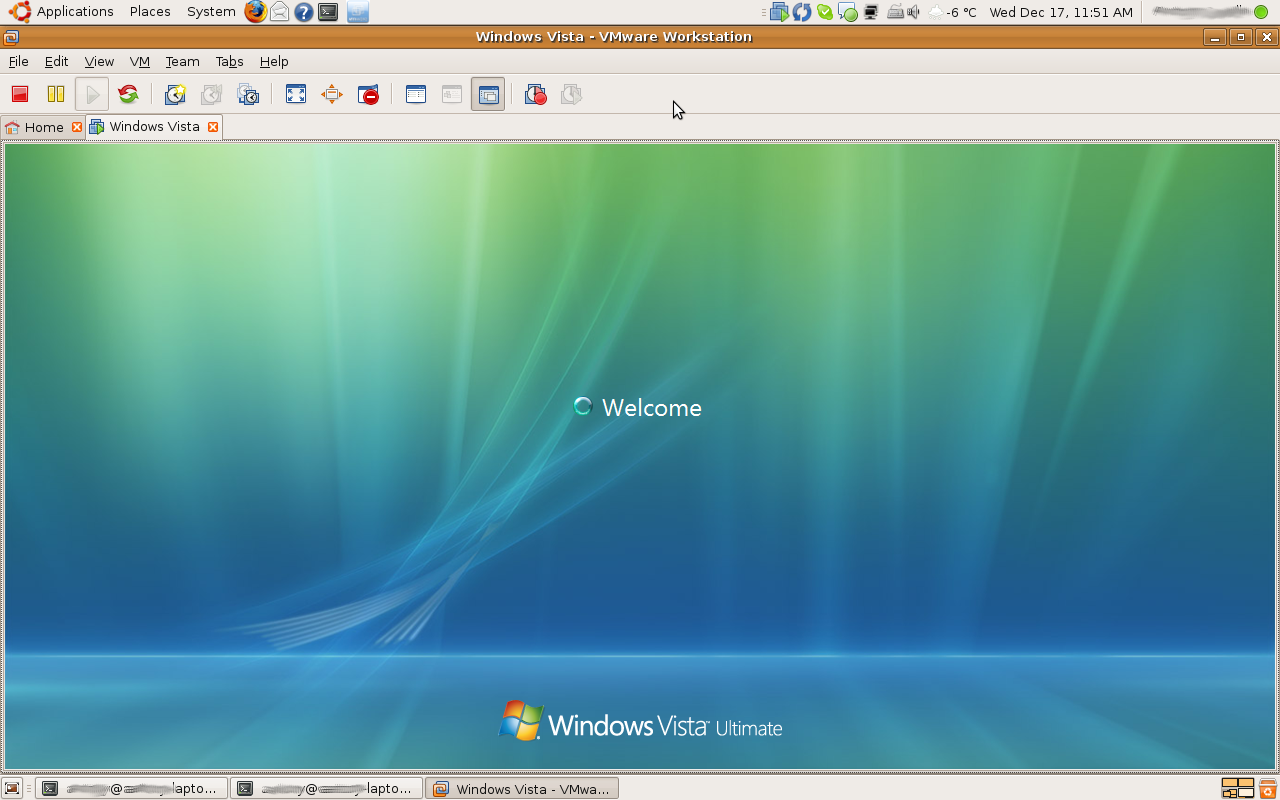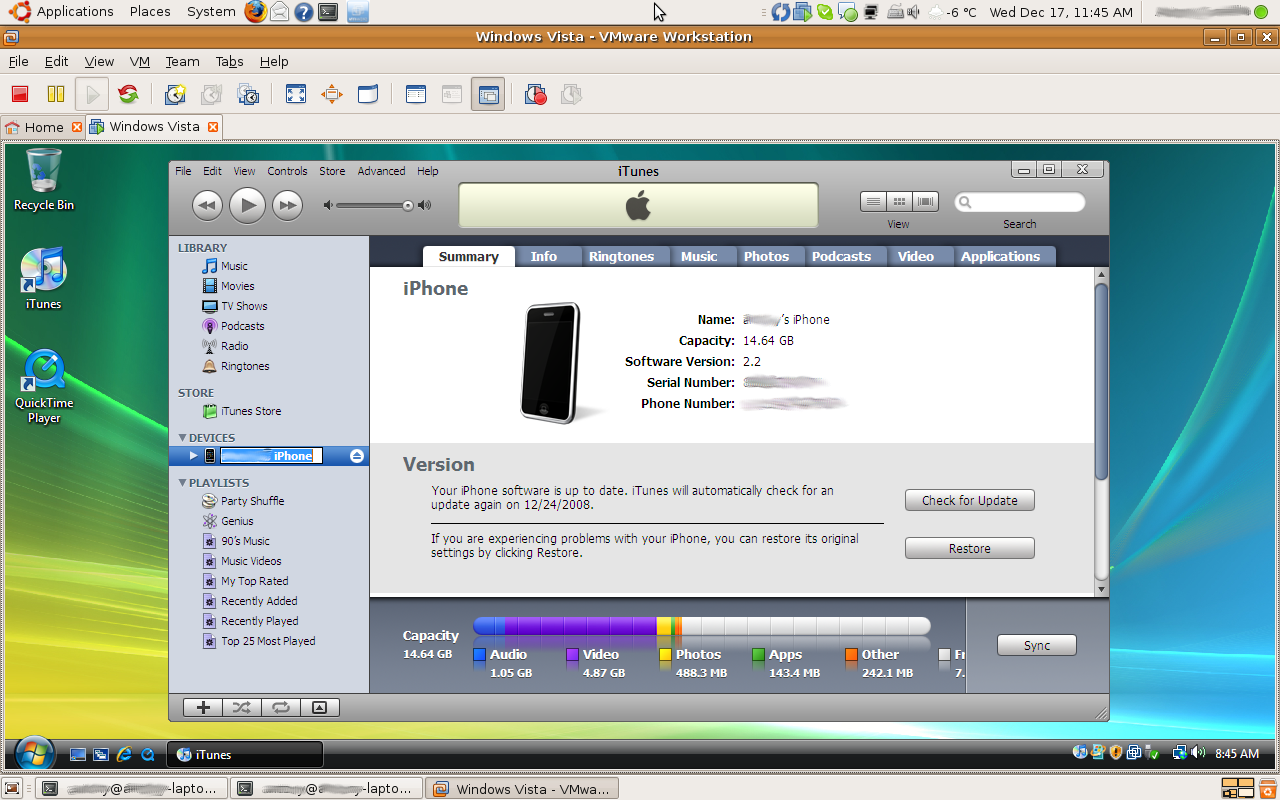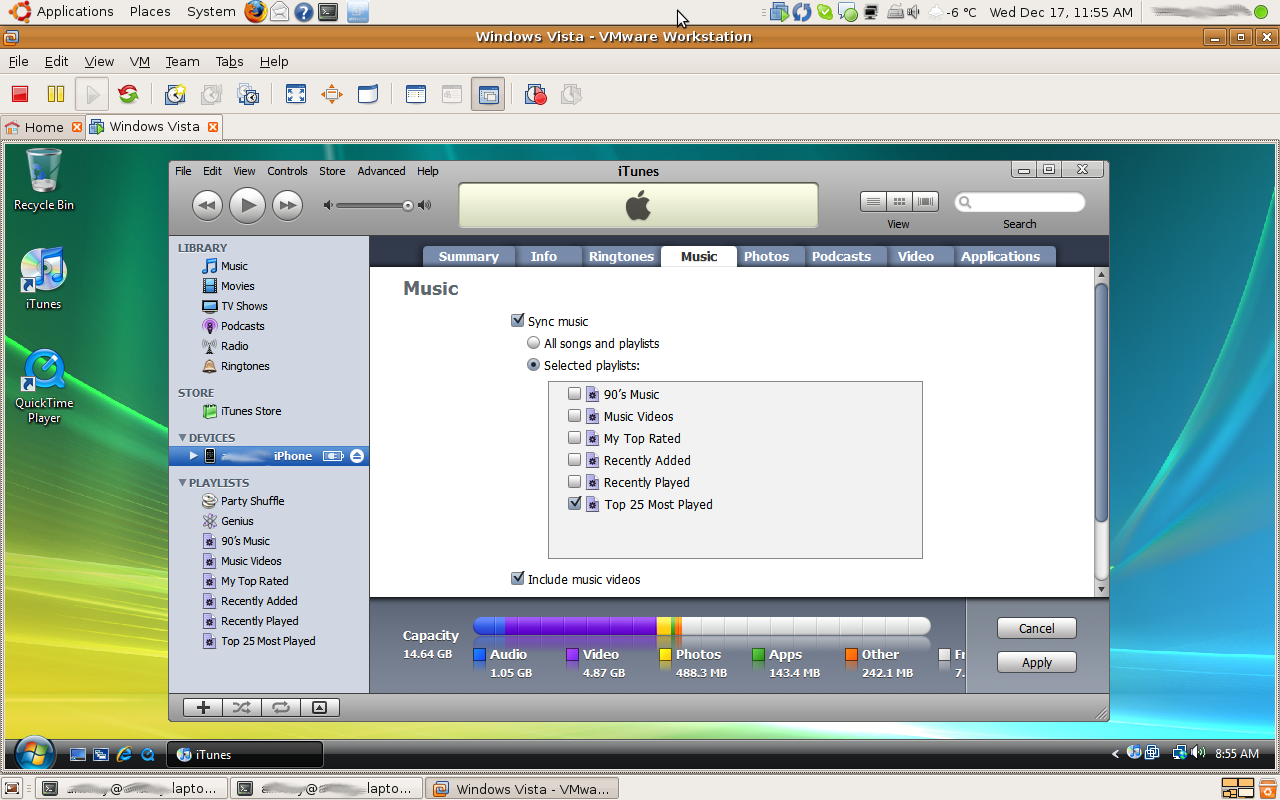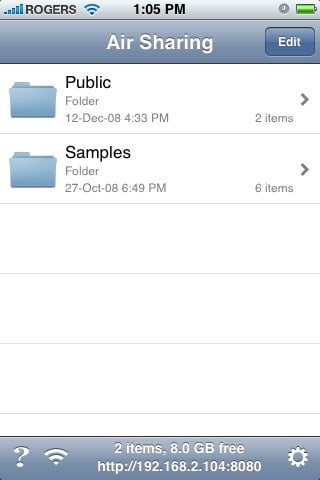3 Ways to (Try and) Get the iPhone to Work with Linux

[I've mentioned about my crazy Ubuntu using IT friend Anthony Casella a few times before. Several months ago he made the switch from Treo to the iPhone 3G and -- surprise surprise -- he's loving it! Well, almost all of it. Problem is, Apple doesn't make an iTunes for Linux. So what's an open source geek to do? Tinker, of course! Here's Antony's first article on (trying to) use the iPhone with Linux. Are you trying to do the same? If so, let us know what you're doing in the comments! - Rene]
It's a fabulously well-known fact that Apple has no interest in bringing support for it's highly popular iPhone to Linux. Perhaps I can go as far as to say is that Linux is to Apple as curd is to eyeball. None the less I have an affinity for the iPhone in spite of the abhorrent treatment I receive being a Linux user. Here are a few ways that you can try to live with this Shakespeareanesque tragedy until such time that Apple sees the error in its ways (ya, right)... after the jump!
By Virtualizing
Although VMware allows for any user to download and install their VMware-server and VMware-player applications free of charge, USB iPhone tethering -- as of this writing -- is only supported by their for-pay VMware-workstation application ($185, OUCH!). By simply heading to www.vmware.com you can purchase and download the application by filling out their online form. Once installed, you can virtualize your Windows OS of choice (actually, iTunes 8 is only supported by XP SP2 and up), download iTunes and then synchronize, purchase and play music.
The obvious drawback would be that you'd need a Windows installation disk and valid installation key (Well, most of us need this anyway, ahem). Secondly, you are cruising at not-so-blazing-fast USB 1.0 speeds due to a VMware limitation. On top of that is the $189 fee is a non starter for many simply wanting to listen to their tunes. Finally, running a VM of any OS can be a resource hog so going this route, albeit the most feature complete, seems a bit overkill.






By Jailbreaking
For those of you who don't have an original iPhone 2G and have not upgraded to firmware 2.x, or perhaps simply despise soiling their favorite distro with anything from Microsoft, then there is a Linux-only way to sync your files. The Ubuntu specific "How To" found at the Ubuntu community iPhone site gives you a step by step guide to getting this working using the awesome Amarok music player. I am very aware that Ubuntu != Linux but the guide can tailored to other distros if that is your inclination.
I think it's easy to see why this is less than optimal. Let's be honest, iPhone 2G is last gen and missing out on the App store that came with firmware 2.x would royally suck. Frankly, even though a jailbroken iPhone gives me benefits like being able to multitask my ssh client and run a mail app, I can honestly say that I would be missing out on some of my favs like the Google Mobile App (where I feel like I am a Trekkie talking into my communicator waiting for the "Computer" to give me the answer to all my questions), iTunes remote, I.TV and Air Sharing (more about this next).
By Compromising
I've found a less intrusive way to synchronize my music, photos and movies than what is employed by the previous two methods. I, like most system administrators, use and am able to function with multiple operating systems. I use Linux at work, Windows and Mac OS X at home. I don't follow the zealotry of others who find it necessary to keep a pristine mono-OS-culture. This is where the iPhone app Air Sharing (iTunes Link - currently on holiday sale!) comes into play. The app costs $4.99 and can be installed directly onto the iPhone via the App Store. Any song that I have ripped from CD, or any movie I have ripped from DVD, can be loaded onto the iPhone via the Air Sharing application using WebDAV or Bonjour over a wifi network. This lets me store my ripped MP3 music and MP4 videos onto the device.
Master your iPhone in minutes
iMore offers spot-on advice and guidance from our team of experts, with decades of Apple device experience to lean on. Learn more with iMore!
The thing that differentiates this from some simple USB key is that I can also play these files from within the Air Sharing app if the urge should arise. Once I am at an iTunes capable OS, I then copy the files off of the iPhone via Air Sharing and sync them to iTunes which then places them into my playlists and ultimately on the the iPhone "as Jobs intended."
As with the other two methods, there are some snags. One of which is that most people may have a problem having to select a new music file to play each time a song ends as the Air Sharing app doesn't auto play the next item. The biggie of course is that DRM'd files that you want to place into Air Sharing for transfer to your linux box will NOT play on said linux box (via any legal means). That's DRM for you.









Conclusion
Let's face it, none of these are ideal. Until iTunes is reversed engineered or perhaps Jobs allows for even a WINE enabled installation a la Picasa2, we Linux users will have to continue to rely on our resourcefulness to get the full benefits of our iPhones.

Rene Ritchie is one of the most respected Apple analysts in the business, reaching a combined audience of over 40 million readers a month. His YouTube channel, Vector, has over 90 thousand subscribers and 14 million views and his podcasts, including Debug, have been downloaded over 20 million times. He also regularly co-hosts MacBreak Weekly for the TWiT network and co-hosted CES Live! and Talk Mobile. Based in Montreal, Rene is a former director of product marketing, web developer, and graphic designer. He's authored several books and appeared on numerous television and radio segments to discuss Apple and the technology industry. When not working, he likes to cook, grapple, and spend time with his friends and family.
